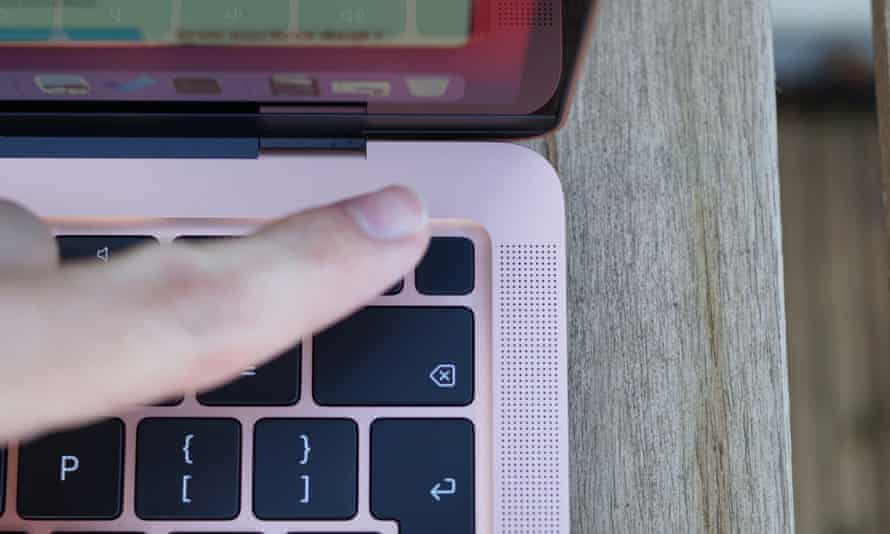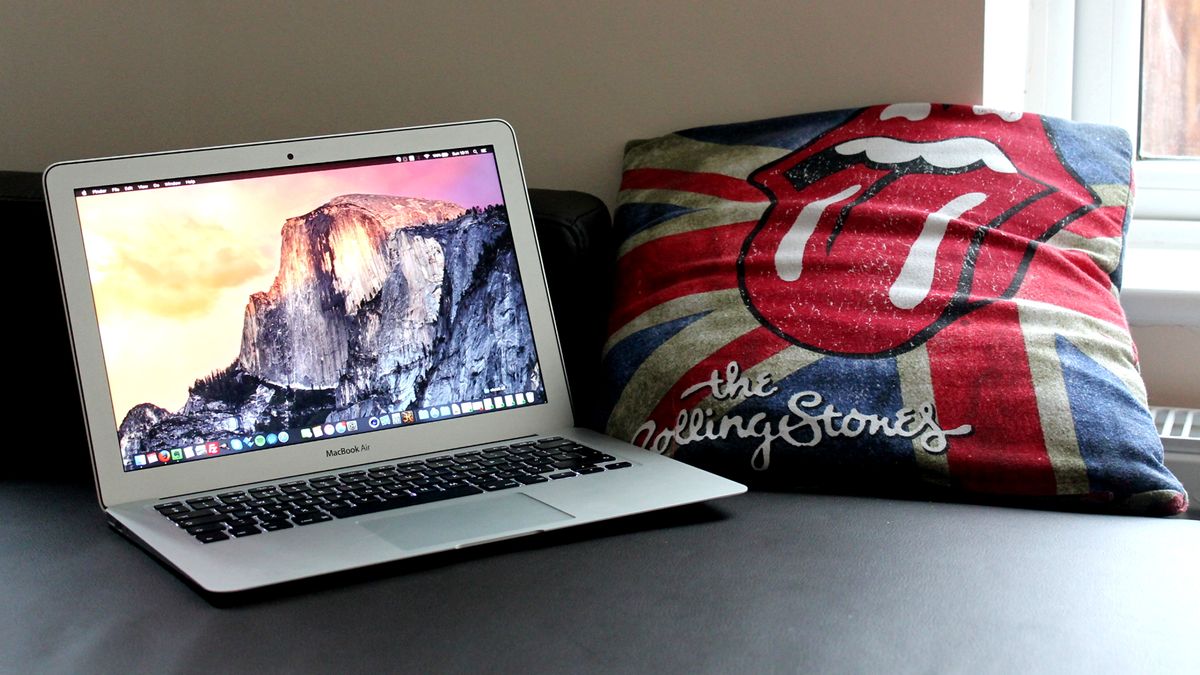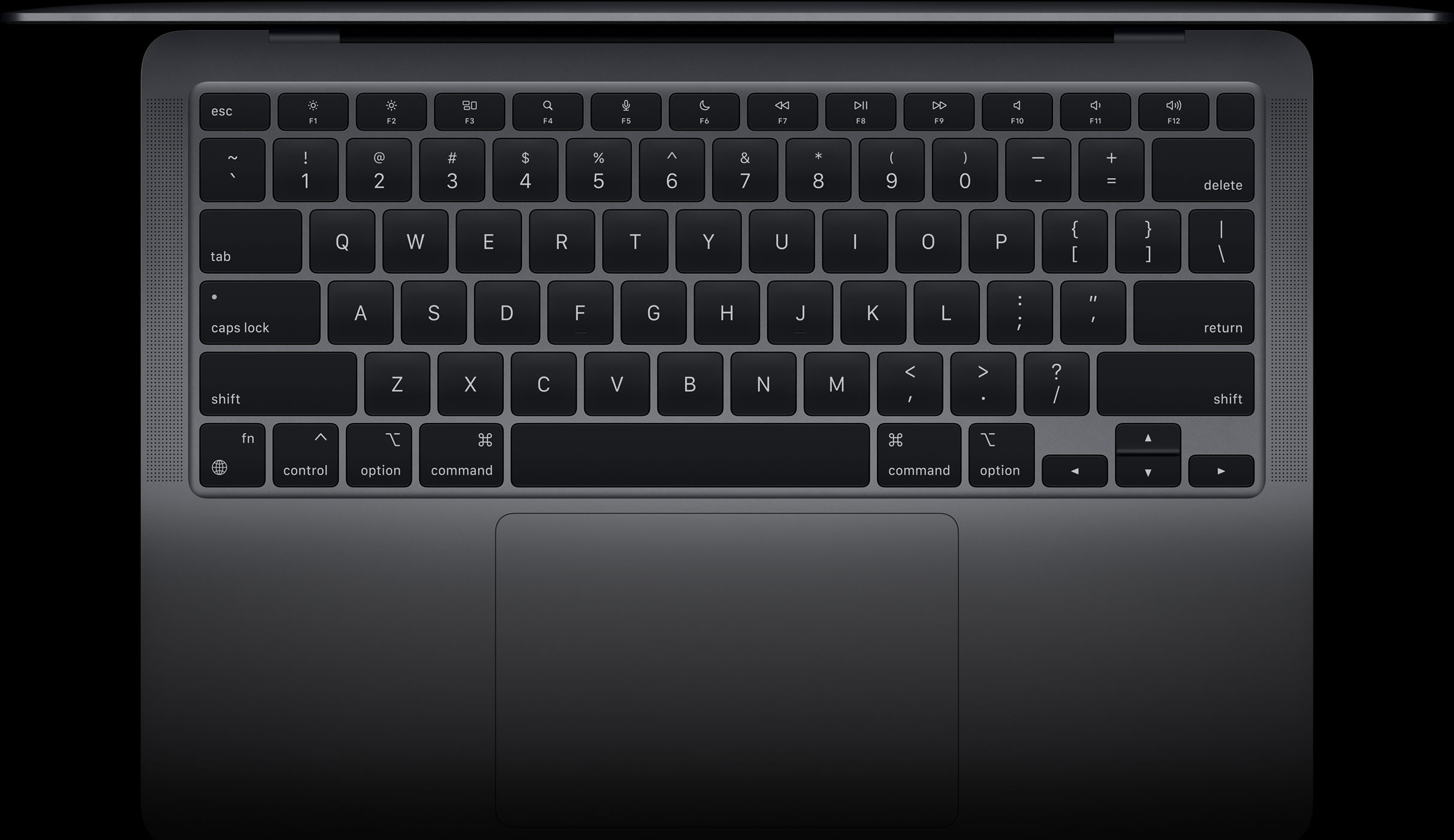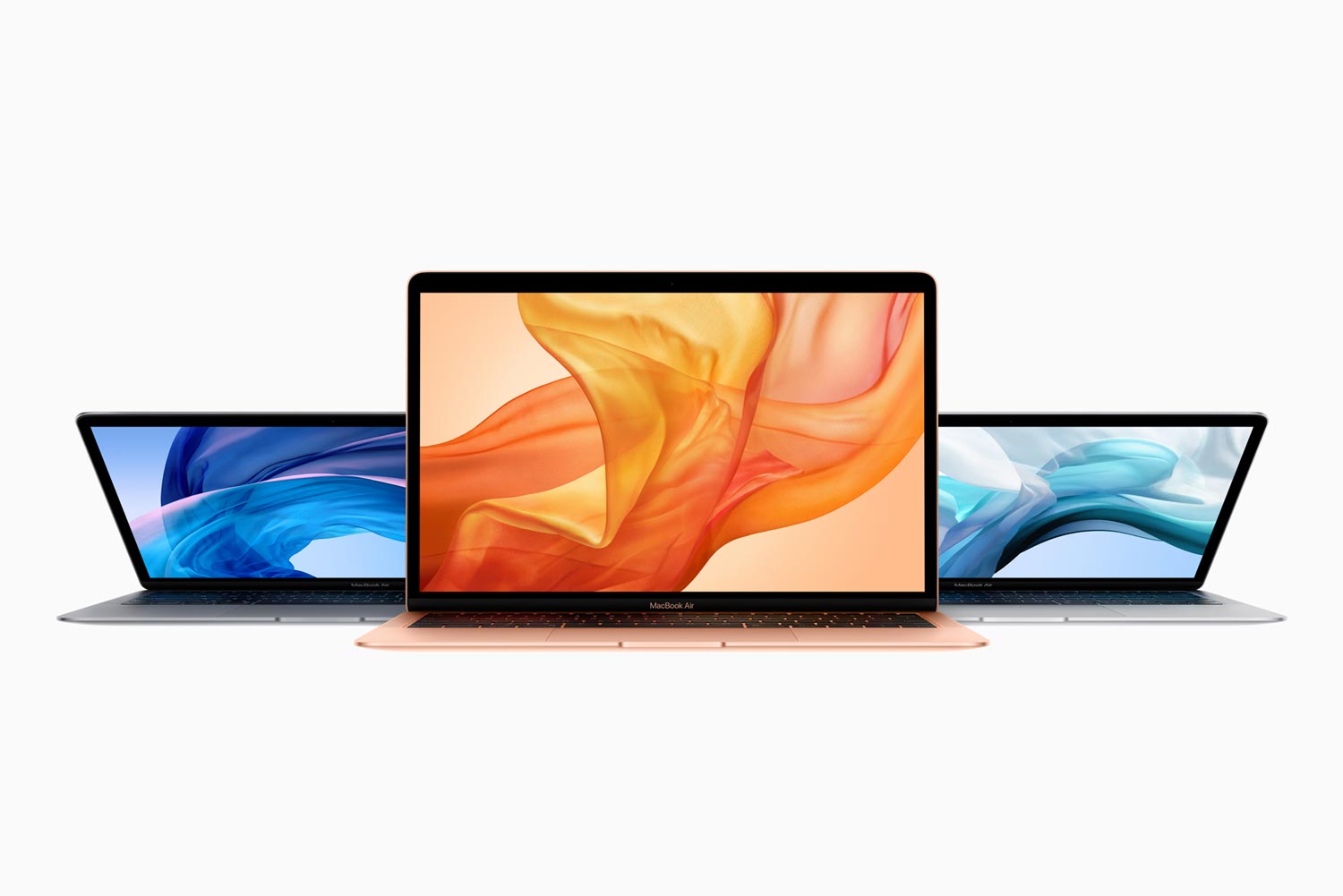The MacBook Air with Apple's M1 chip is the best choice for most people, but the MacBook Pro's extra power and longer battery life might benefit some. Valid only on qualifying purchases in the U.S. For new Apple Card customers who open an account and use it between 3/1/2021 and 3/31/2021 at Apple Store locations, apple.com, the Apple Store app, or by calling 1-800-MY-APPLE. Accounts opened prior to 3/1/2021 or after 3/31/2021 do not qualify. 6% is the total amount of Daily Cash that can be. MacBook Air models are organised by the year they were introduced, starting with the most recent. Click the model name for detailed technical specifications. MacBook Air models from 2013 and newer can run the latest version of macOS.
- Apple Macbook Air Charger Australia
- Apple Macbook Air 2020 Australia
- Apple Macbook Air Australia Air
- Apple Macbook Air Accessories Australia
Your Mac provides several tools to help you identify it. The simplest is About This Mac, available by choosing About This Mac from the Apple menu in the top left-hand corner of your screen. The other is the System Information app. Find out how to use these tools to identify your Mac.
If you don't have your Mac or it's not able start up, use one of these solutions instead:
- Find the serial number printed on the underside of your Mac, near the regulatory markings. It's also on the original packaging, next to the barcode label. You can then enter that serial number on the Check Coverage page to find your model.
- The original packaging might also show an Apple part number, such as MQD32xx/A (“xx” is a variable that differs by country or region). You can match the Apple part number to one in the list below to find your model.
List of MacBook Air models
MacBook Air models are organised by the year they were introduced, starting with the most recent. Click the model name for detailed technical specifications.
MacBook Air models from 2013 and newer can run the latest version of macOS. For older models, the latest compatible operating system is noted.
2020
MacBook Air (M1, 2020)
Colours: Space grey, gold, silver
Model Identifier: MacBookAir10,1
Part Numbers: MGN63xx/A, MGN93xx/A, MGND3xx/A, MGN73xx/A, MGNA3xx/A, MGNE3xx/A
Tech Specs: MacBook Air (M1, 2020)
User Guide: MacBook Air (M1, 2020)
MacBook Air (Retina, 13-inch, 2020)
Colours: Space grey, gold, silver
Model Identifier: MacBookAir9,1
Part Numbers: MVH22xx/A, MVH42xx/A, MVH52xx/A, MWTJ2xx/A, MWTK2xx/A, MWTL2xx/A
Tech Specs: MacBook Air (Retina, 13-inch, 2020)
User Guide: MacBook Air (Retina, 13-inch, 2020)
2019
MacBook Air (Retina, 13-inch, 2019)
Colours: Space grey, gold, silver
Model Identifier: MacBookAir8,2
Part Numbers: MVFH2xx/A, MVFJ2xx/A, MVFK2xx/A, MVFL2xx/A, MVFM2xx/A, MVFN2xx/A, MVH62xx/A, MVH82xx/A
Tech Specs: MacBook Air (Retina, 13-inch, 2019)
User Guide: MacBook Air (Retina, 13-inch, 2019)
2018
MacBook Air (Retina, 13-inch, 2018)
Colours: Space grey, gold, silver
Model Identifier: MacBookAir8,1
Part Numbers: MRE82xx/A, MREA2xx/A, MREE2xx/A, MRE92xx/A, MREC2xx/A, MREF2xx/A, MUQT2xx/A, MUQU2xx/A, MUQV2xx/A
Tech Specs: MacBook Air (Retina, 13-inch, 2018)
User Guide: MacBook Air (Retina, 13-inch, 2018)
2017
MacBook Air (13-inch, 2017)
Model Identifier: MacBookAir7,2
Part Numbers: MQD32xx/A, MQD42xx/A, MQD52xx/A
Tech Specs: MacBook Air (13-inch, 2017)
User Guide: MacBook Air (13-inch, 2017)
Apple Macbook Air Charger Australia
2015
MacBook Air (13-inch, Early 2015)
Model Identifier: MacBookAir7,2
Part Numbers: MJVE2xx/A, MJVG2xx/A, MMGF2xx/A, MMGG2xx/A
Tech Specs: MacBook Air (13-inch, Early 2015)
User Guide: MacBook Air (13-inch, Early 2015)
MacBook Air (11-inch, Early 2015)
Model Identifier: MacBookAir7,1
Part Numbers: MJVM2xx/A, MJVP2xx/A
Tech Specs: MacBook Air (11-inch, Early 2015)
User Guide: MacBook Air (11-inch, Early 2015)
2014
MacBook Air (13-inch, Early 2014)
Model Identifier: MacBookAir6,2
Part Numbers: MD760xx/B, MD761xx/B
Tech Specs: MacBook Air (13-inch, Early 2014)
User Guide: MacBook Air (13-inch, Early 2014)
MacBook Air (11-inch, Early 2014)
Model Identifier: MacBookAir6,1
Part Numbers: MD711xx/B, MD712xx/B
Tech Specs: MacBook Air (11-inch, Early 2014)
User Guide: MacBook Air (11-inch, Early 2014)
2013
MacBook Air (13-inch, Mid 2013)
Model Identifier: MacBookAir6,2
Part Numbers: MD760xx/A, MD761xx/A
Tech Specs: MacBook Air (13-inch, Mid 2013)
User Guide: MacBook Air (13-inch, Mid 2013)
MacBook Air (11-inch, Mid 2013)
Model Identifier: MacBookAir6,1
Part Numbers: MD711xx/A, MD712xx/A
Tech Specs: MacBook Air (11-inch, Mid 2013)
User Guide: MacBook Air (11-inch, Mid 2013)
2012
MacBook Air (13-inch, Mid 2012)
Model Identifier: MacBookAir5,2
Part Numbers: MD231xx/A, MD232xx/A
Newest compatible operating system: macOS Catalina 10.15.7
Tech Specs: MacBook Air (13-inch, Mid 2012)
User Guide: MacBook Air (13-inch, Mid 2012)
MacBook Air (11-inch, Mid 2012)
Model Identifier: MacBookAir5,1
Part Numbers: MD223xx/A, MD224xx/A
Newest compatible operating system: macOS Catalina 10.15.7
Tech Specs: MacBook Air (11-inch, Mid 2012)
User Guide: MacBook Air (11-inch, Mid 2012)
2011


MacBook Air (13-inch, Mid 2011)
Model Identifier: MacBookAir4,2
Part Numbers: MC965xx/A, MC966xx/A
Newest compatible operating system: macOS High Sierra 10.13.6
Tech Specs: MacBook Air (13-inch, Mid 2011)
User Guide: MacBook Air (13-inch, Mid 2011)
MacBook Air (11-inch, Mid 2011)
Model Identifier: MacBookAir4,1
Part Numbers: MC968xx/A, MC969xx/A
Newest compatible operating system: macOS High Sierra 10.13.6
Tech Specs: MacBook Air (11-inch, Mid 2011)
User Guide: MacBook Air (11-inch, Mid 2011)
2010
MacBook Air (13-inch, Late 2010)
Model Identifier: MacBookAir3,2
Part Numbers: MC503xx/A, MC504xx/A
Newest compatible operating system: macOS High Sierra 10.13.6
Tech Specs: MacBook Air (13-inch, Late 2010)
MacBook Air (11-inch, Late 2010)
Model Identifier: MacBookAir3,1
Part Numbers: MC505xx/A, MC506xx/A
Newest compatible operating system: macOS High Sierra 10.13.6
Tech Specs: MacBook Air (11-inch, Late 2010)
2009
MacBook Air (Mid 2009)
Model Identifier: MacBookAir2,1
Part Numbers: MC505xx/A, MC233xx/A, MC234xx/A
Newest compatible operating system: OS X El Capitan 10.11.6
Tech Specs: MacBook Air (Mid 2009)
With both the MacBook Air and MacBook Pro having been refreshed in 2020, it's a tempting time to buy – but which is the best balance for your needs?
We'll help you work out which is the better buy for an Apple laptop: the cheaper, lighter option or the more expensive, powerhouse option? We'll explain everything you need to know.
• Read our full Apple MacBook Air 2020 review
Of course what's right for one laptop buyer isn't necessarily right for another, and so we'll break down the differences between these two ranges so you know exactly what you're looking at. You'll also need to decide how you're going to be using your new computer, so you can make the best decision based on the information we'll give you.
- Best Apple MacBook Air deals – find the cheapest price
- Best Apple MacBook Pro deals – the latest offers
- Best monitors for MacBook Pro – extend your working space
MacBook Air vs MacBook Pro: Design & usability
The MacBook Air is the smaller and lighter laptop of the two.. hence the name. When closed, at its thinnest point it's 0.41 cm thick, compared with 1.49cm (0.59 inches) for the 13-inch MacBook Pro and 1.62 cm (0.64 inches) for the 16-inch MacBook Pro. However, it's worth noting that the MacBook Air is actually 1.61cm (0.63 inches) at its thickest point, so it's actually slight thicker than the 13-inch MacBook Pro. But its tapered design leaves it feeling slimmer and more handle-able overall.
The MacBook Air weighs in at 1.29kg (2.8 pounds), compared with 1.37 g (3.02 pounds) for the 13-inch Pro and 2kg (4.3 pounds) for the 16-inch Pro. Download macos catalina virtualbox image. Again, note that the difference between the MacBook Air and 13-inch MacBook Pro isn't huge.
All three models use Apple's latest generation of keyboard, which is a crucial improvement over previous models. You may have heard of reliability concerns around Apple's keyboards over the last few years, but now 100% of its laptops use a new design for the mechanics of the keys, and it's both more comfortable and (based on use so far) less likely to break than previous models.
The keys have a fairly short travel, but you can feel the movement, and there's great feedback, so accuracy is no problem.
All the models have excellent trackpads, too – this is one area Apple nailed a long time ago, and never missteps on.
The 16-inch MacBook Pro finds room for noticeably bigger and more impressive speakers than you get on either the MacBook Air or the 13-inch MacBook Pro… or almost any laptop we've tried, really. They're genuinely impressive, and not in a mealy-mouthed 'well, they're good for laptop speakers' way. They use an advanced design with two opposing drivers in each side, one facing up, one facing down, so that the vibrations from each will cancel each other out, so you get big noise levels without feeling any shake in the frame. Some high-end speakers use this setup, including the Bang & Olufsen Beosound Balance.
The MacBook Air and smaller MacBook Pro also have good speakers, but now we're back into for laptops territory. The stereo separation is impressive, though, and you certainly won't feel like you're missing out when it comes to sounds.
Update git mac command line. Commands marked. are bash built-in commands. Bash is the default shell, it runs under Darwin the open source core of macOS. In macOS Catalina the default shell will change to zsh and in time this page will be updated to include that. To update macOS from the command line, first launch Terminal, which can be found in the Applications/Utilities folder. This will open a Terminal window and a command prompt for you to begin typing. On Linux or macOS, you can use the bundled installer to install version 1 of the AWS Command Line Interface (AWS CLI). The bundled installer includes all dependencies and can be used offline. The bundled installer doesn't support installing to paths that contain spaces.
The MacBook Pro models also have new microphone arrays that Apple's calls 'studio quality', though we'd still probably suggest a real microphone for your hit podcast. However, in our new world of video-conferencing all the time, they're a big improvement over most built-in mics.
There are also some differences in terms of the ports you've got available, which will get on to shortly. Finally, while all these laptops come in either silver or space grey, only the MacBook Air offers a gold option – and it's a really nice colour.
MacBook Air vs MacBook Pro: display
The comparison is really close when it comes to the display. Both the MacBook Air and the smaller MacBook Pro have a 13.3-inch screen running at a 2560x1600 resolution – though the Pro does use a wider P3 colour gamut, and is slightly brighter (500 nits versus 400 nits).
The difference doesn't matter much if you're just doing document work (though the extra brightness makes the Pro easier to see in bright light conditions, such as sunlight), but the broader colours and boosted brightness matter for creative work.
The larger MacBook Pro sports a 16-inch screen running at a 3072x1920 resolution (with the wider colour gamut and extra brightness), which gives a lot more room to work.
The single most important thing (in our opinion) is that all three models support True Tone, which changes the colour balance of the screen to match the lighting of the room you're in, so you don't get that off-putting thing of a screen appearing blue when the light around you is yellow. This is kinder on the eyes in the evening – we wouldn't want to live without it.
MacBook Air vs MacBook Pro: specs and options
Apple gives you a plethora of options when it comes to kitting out the latest MacBook Airs and MacBook Pros. The MacBook Air first: you start off with a 1.1GHz dual-core 10th-gen Intel Core i3 processor (Turbo Boost up to 3.2GHz), 8GB of RAM, and 256GB of storage. That's for the base version, which costs £999/$999/AUS$1,599.
There is a model that's a step up, though, giving you a quad-core 1.1GHz 10th-gen Intel Core i5 processor (Turbo Boost to 3.5GHz), 8GB of RAM and 512GB of storage. That costs £1,299/$1,299/AUS$1,599 and we think it's a good option if you want a bit more head-room for your tasks. The base version is good for web browsing, document work and basic photo and video editing, for example, but if you wanted to get fancier with Photoshop, 4K video or programming then we'd suggest the quad-core version. Getting the extra power plus double the storage for that upgrade fee seems like a good deal to us.

You can configure your MacBook Air further – you can go up to 16GB of RAM and a maximum of 2TB of storage. Graphics are provided by integrated Intel Plus chips on all 2020 MacBook Air models, which is a significant step up over previous versions of the Air.
• Browse all MacBook Air options at the Apple Store UK

• Browse all MacBook Air options at the Apple Store US
• Browse all MacBook Air options at the Apple Store Australia
The 13-inch MacBook Pro is the next step up in power. At its cheapest, you get a 1.4GHz quad-core 8th-gen Intel Core i5 processor (Turbo Boost up to 3.9GHz), 8GB of RAM, 256GB or 512GB of storage, and integrated Intel Iris Plus Graphics 645, all from £1,299/£1,299/AUS$1,999. These lower-end versions of the MacBook Pro 13-inch haven't had a spec upgrade this year – only the keyboard was improved.
However, at the higher end, the MacBook Pro 13-inch has had a very nice upgrade in 2020. Starting from £1,799/$1,799/AUS$2,999, you get a 2.0GHz Intel 10th-gen Core i5 quad-core processor, the latest Intel Iris Plus graphics, 16GB of faster RAM, and 512GB or 1TB of storage.
• Browse all 13-inch MacBook Pro models at the Apple Store UK
• Browse all 13-inch MacBook Pro models at the Apple Store US
• Browse all 13-inch MacBook Pro models at the Apple Store Australia
The top-end 16-inch MacBook Pro configurations start out at a 2.6GHz 6-core 9th-gen Intel Core i7 processor (Turbo Boost up to 4.5GHz), 16GB of RAM, 512GB of storage, and Radeon Pro 5300M 4GB graphics. That'll cost you £2,399/$2,399/AUS$3,799.
The next model up gets you a 2.3GHz 8-core 9th-gen Intel Core i9 (Turbo Boost up to 4.8GHz), 16GB of RAM, 1TB of SSD and Radeon Pro 5500M 4GB graphics. This version costs £2,799/$2,799/AUS$4,399.
If you really want to trick the laptop out, you can go all the way up to a 2.4GHz 8-core 9th-gen Intel Core i9 processor (Turbo Boost up to 5.0GHz), 64GB of RAM, a massive 8TB of storage, and Radeon Pro 5600M 8GB graphics.
• Browse all 16-inch MacBook Pro models at the Apple Store UK
• Browse all 16-inch MacBook Pro models at the Apple Store US
• Browse all 16-inch MacBook Pro models at the Apple Store Australia
We should note that 16-inch MacBook Pro hasn't received a full upgrade in 2020, and is rumoured to get one in towards the end of the year.
That top-end 16-inch MacBook Pro is an absolute beast, but overkill unless you're rendering video or doing something equally demanding – for most casual computing use, the lower specs on the MacBook Air and 13-inch MacBook Pro will do you just fine.
- Here's our definitive list of the best laptops of the moment
MacBook Air vs MacBook Pro: features and ports
Apple Macbook Air 2020 Australia
All these MacBooks are going to come running the latest versions of macOS, Catalina. They'll also get all free updates for the foreseeable future, including the new OS, Big Sur, that we expect to land in October 2020 most likely. From a software point of view, they all have the same features and capabilities, and access to the same applications.
The less powerful components of the MacBook Air equal longer battery life: Apple quotes 12 hours of wireless web use and 13 hours of iTunes video watching. That beats out the quoted 10 hours of wireless web use and 10 hours of iTunes video watching for the MacBook Pro models.
In practice, it's common for people to see lower battery life than that from the MacBook Pros, but not because of any deception with Apple's figures – it's just that those are the machines people use for more demanding software, and the more hardcore an app is, the more quickly it drains your power.
The MacBook Air features two Thunderbolt 3 (USB‑C) ports, plus a 3.5mm headphone jack. That matches the cheaper versions of the 13-inch MacBook Pro, but if you buy the more powerful versions of the 13-inch MacBook Pro (with the 10th-gen processors) you instead get four Thunderbolt 3 (USB-C) ports and a headphone jack.
With the 16-inch MacBook Pro, all models come with four Thunderbolt 3 (USB-C) ports, plus a headphone jack. You might need a dongle or a hub (or two) whichever model you opt for.
It's worth noting that all of the MacBook Pros include the Touch Bar, and the MacBook Air doesn't. The Touch Bar is a touchscreen that runs across the top of the keyboard in place of the function keys, and it can display custom controls depending on the app you're in – or it can display a set of standard controls of your choosing.
These can be quite handy when they're shortcuts or give you access to fine-grained sliders or other options that would normally be buried a couple of clicks deep. But we wouldn't call the Touch Bar essential by any means – a lot of people just don't use it.
Both the MacBook Air and MacBook Pro models include Touch ID fingerprint security. That makes life much easier for logging in, and for verifying your identity for online security.
MacBook Air vs MacBook Pro: pricing and verdict
Both the MacBook Air and the MacBook Pro will give you a top Apple laptop experience – it's just a question of how much power you're going to need (and how light you want your laptop to be while you're lugging it around).
At the top end, the 16-inch MacBook Pro can be kitted out with ludicrous amounts of power, memory and storage, and it gives you that extra screen real estate to work with as well.
Apple Macbook Air Australia Air
The 13-inch model offers an impressive level of performance from its upper-tier models too, though you don't get the discrete graphics options that you do with the bigger laptop. The cheaper 13-inch models are certainly capable, but it's a shame that internals haven't been upgraded to newer options.
On the other hand, the MacBook Air is lightweight and a little bit cheaper too (check out the widgets on this page for the latest prices). If you're more of a casual computer user then you can save yourself some money with a cheaper option – remember the macOS software is the same on all these models.
Apple Macbook Air Accessories Australia
The scale of price and performance is clear to see as you move up from the MacBook Air to the MacBook Pro, despite there being some potential crossover where the higher-tier MacBook Air has a quad-core processor that appears not far off the power of the base level 13-inch MacBook Pro's processor.
But the more constrained chassis of the new Air means that processor will hit its heat limits fairly quickly when taxed hard, while the MacBook Pro has more room to manoeuvre. And if you step up the higher-tier 13-inch MacBook Pro, you get a major boost in speed even while staying at quad-core.
But the good news is that there are plenty of configuration options along the way, so you should be able to find an Apple laptop that meets your needs.
You can find the lowest prices on any given model of MacBook Pro or MacBook Air using our price finders below – you can use the Filters to specify the specs you want.
